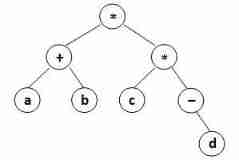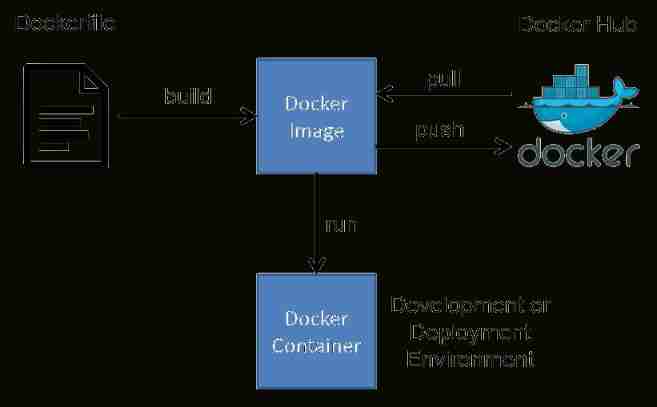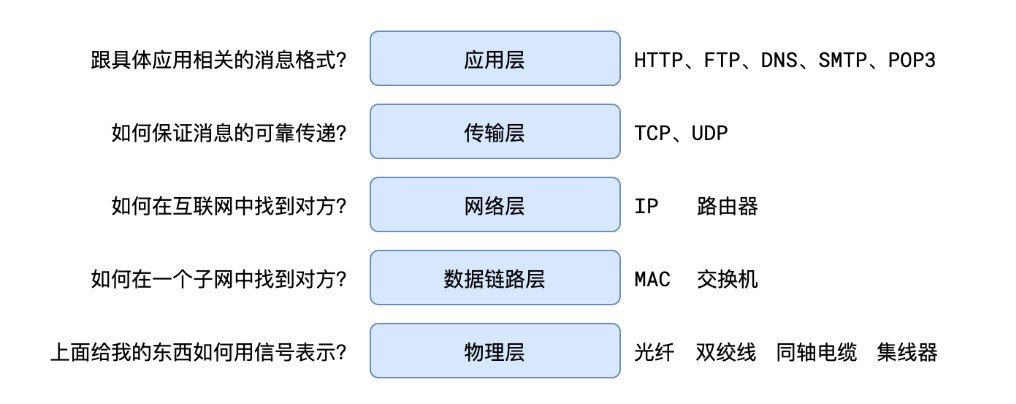当前位置:网站首页>Nmap使用手册学习记录
Nmap使用手册学习记录
2022-07-05 03:33:00 【paidx0】
简单记录一下nmap的一些基本指令,别问,问就是命令太多了,英文文档翻得累,nmap的扫描功能和隐蔽性很强大的,很有必要多看看
目标说明
-iL <inputname> (从列表或文件输入)
-iR <hostnum> (随机选择生成目标数量)
--exclude <host1,host2> (排除的主机网络)
主机发现
-sL (列表扫描)
-sP (Ping扫描,可以和除了-P0的任何发现方式结合)
-P0 (无Ping,所有主机视为在线,跳过主机发现)
-PS <portlist> (TCP SYN Ping)
-PA <portlist> (TCP ACK Ping,实际发送的还是SYN报文,而不是ACK报文。无状态防火墙,有状态非预期防火墙,即指定-PS又指定-PA,即SYS和ACK)
-PU <portlist> (UDP Ping,穿越TCP防火墙)
-PE;-PP;-PM (ICMP Ping)
-PR (ARP Ping ,基于ARP比基于IP更快更可靠,默认当目标主机在同一局域网上时,即使指定了ping的类型,也会使用ARP。不想要ARP,--send-ip)
-n (永不进行反向域名解析)
-R (所有目标反向域名解析)
--system-dns (使用系统域名解析器,除非nmap的DNS有问题才这样,因为贼慢)
端口扫描
nmap的6个端口状态
1、open(开放的)
2、closed (关闭的)
3、filtered(被过滤的)
4、unfiltered(未被过滤的,ACK扫描才会分类这种状态,其他类型扫描确认)
5、open|filtered(开放或被过滤的)
6、closed|filtered(关闭或被过滤的)
-sS (SYN,默认,TCP半连接不易发现,返回明确的端口状态)
-sT (TCP)
-sU (UDP)
-sN;-sF;-sX (TCP Null,FIN,Xmas,除了探测标志位不同,行为上完全一致,可以躲过一些无状态防火墙,甚至比SYN更隐秘,缺点无法正确标记端口状态)
-sA (ACK,无法判断端口状态,用于发现防火墙规则)
-sW (TCP窗口,不准确)
-sM (Maimon,和Null,FIN,Xmas完全一样,除了报文是FIN/ACK)
--scanflags (定制的TCP扫描,设置标志位或者扫描类型)
-sl <zombie host:probeport> (TCP端口盲扫描,没有报文从你的真实ip地址发送到目标,极端隐蔽,不加端口默认80)
-sO (IP协议扫描)
-b <ftp host> (FTP弹跳扫描,代理ftp连接,格式<username>:<password>@<server>:<port>,server是脆弱的FTP服务器名字ip)
端口说明
-p <port range> (只扫描指定端口)
-F (快速扫描,大约1200常用端口)
-r (顺序扫描,出于效率,默认随机扫描,按照常用端口前移)
服务和版本探测
-sV (版本探测,-A 同时打开操作系统和版本探测)
--allports (不为版本探测排除任何端口,默认下跳过9100端口,像一些简单打印机的打印数据)
--version-intensity <intensity> (设置版本扫描强度1-9,默认7)
--version-light (version-intensity2 的别名,轻量级更快,识别服务弱一点)
--version-all (尝试所有探测,version-intensity9 的别名,对每个端口的探测)
--version-trace (跟踪版本扫描活动,打印详细的关于正在进行的扫描调试信息)
-sR (RPC,-sV版本探测包含了它且更全面,所有-sR很少需要)
操作系统探测
-O (启用操作系统检测,-A)
--osscan-limit (对指定的目标操作系统检测,仅在使用-O或-A操作系统检测起作用)
--osscan-guess;--fuzzy (推测操作系统检测结果,无法确定时尽可能的匹配,默认匹配)
时间和性能
--min-hostgroup <milliseconds>;--max-hostgroup <milliseconds> (调整并行扫描组的大小范围)
--min-parallelism <milliseconds>;--max-parallelism <milliseconds> (调整探测报文的并行度,通常max设为1,min设为10)
--min-rtt-timeout <milliseconds>;--max-rtt-timeout <milliseconds>;--initial-rtt-timeout <milliseconds> (调整探测报文超时)
--host-timeout <milliseconds> (放弃低速目标主机)
--scan-delay <milliseconds>;--max-scan-delay <milliseconds> (调整探测报文的时间间隔,躲避基于阈值的入侵检测和预防系统)
-T <Paranoid|Sneaky|Polite|Normal|Aggressive|Insane> (设置时间模板0-5,前两种用于IDS躲避,Polite降低扫描速度以使用更少的带宽和目标资源,默认Normal,Aggressive加速扫描,Insane更快的速度牺牲准确性)
防火墙/IDS躲避
-f (分段报文);--mtu (使用指定的MTU,可自定义偏移大小,使用时不用-f,偏移量必须是8的倍数)
-D <decoy1,decoy2,decoy3.....,me....> (使用诱饵隐蔽扫描,第6个或更后位置使用me,端口扫描检测器不会报到这个真实ip,如果不使用nmap会将真实ip随机放一个位置)
-S <IP_address> (源地址哄骗,常配合-e或-P0使用)
-e <interface> (使用指定的接口)
--source-port <portnumber>; -g <portnumber> (源端口哄骗,nmap从指定的端口发送数据)
--data-length <number> (发送报文时,附加随机数据)
--ttl <value> (设置IP time-to-live域)
--randomize-hosts (对目标主机的顺序随机排列)
--spoof-mac <mac address,prefix,or vendor name> (MAC地址哄骗)
输出
-oN <filespec> (标准输出直接写入指定文件)
-oX <filespec> (XML输出直接写入指定文件)
-oS <filespec> (交互式输出)
-oG <filespec> (Grep输出,不建议使用,XML 很强大)
-oA <basename> (扫描结果以标准格式、XML、Grep一次性输出,分别存放在 <basename>.nmap,<basename>.xml和 <basename>.gnmap文件中)
-v (详细输出)
-d [level] (设置调试级别0-9,比-v更多的信息,主要是开发人员用这个)
--packet-trace (跟踪发送和接收的报文,打印发送和接收的报文摘要,用于调试)
--iflist (列举接口和路由,输出检测到的接口列表和系统路由,调试路由和设备描述失误)
--append-output (在输出文件中追加,因为默认被覆盖)
--resume <filename> (继续中断的扫描,-oN或-oG日志被保留时,nmap将新的结果追加文件,不支持XML)
其他选项
-A (激烈扫描模式,包括了操作系统 -O和版本扫描 -sV)
--interactive (在交互模式中启动,这个选项包含了一个!操作符,用于执行shell命令,可用于提权,这也是不安装Nmap setuid root的多个原因之一)
--send-eth (使用原以太网帧发送,原套接 字(IP层)是UNIX主机最有效的方式,而以太网帧最适合Windows操作 系统,因为Microsoft禁用了原套接字支持)
--send-ip (在原IP层发送,要求Nmap通过原IP套接字发送报文,而不是低层的以 太网帧)
实例
nmap -v scanme.nmap.org
扫描主机所有的保留TCP端口,-v 更多细节
nmap -sS -O scanme.nmap.org/24
秘密SYN扫描,探测操作系统版本,主机同C段机器
nmap -sV -p 22,53,110,143,4564 198.116.0-255.1-127
主机列举,TCP扫描,对象为B类188.116网段中255个8位子网。用于确定系统是否运行了sshd、DNS、imapd或4564端口
nmap -v -iR 1000 -P0 -p 80
随机1000台主机扫描web服务是否开启
nmap -P0 -p80 -oX logs/pb-port80scan.xml -oG logs/pb-port80scan.gnmap 216.163.128.20/20
扫描4096个IP地址,查找Web服务器(不ping),将结果以Grep和XML格式保存。
host -l company.com | cut -d -f 4 | nmap -v -iL
进行DNS区域传输,以发现company.com中的主机,然后将IP地址提供给 Nmap。用于GNU/Linux,其它系统进行区域传输时有不同的命令。
边栏推荐
- Sqoop installation
- The perfect car for successful people: BMW X7! Superior performance, excellent comfort and safety
- Zero foundation uses paddlepaddle to build lenet-5 network
- Utilisation simple de devtools
- Delphi free memory
- ICSI213/IECE213 Data Structures
- SPI and IIC communication protocol
- Pat class a 1160 forever (class B 1104 forever)
- [luat-air105] 4.1 file system FS
- SQL performance optimization skills
猜你喜欢

The perfect car for successful people: BMW X7! Superior performance, excellent comfort and safety

Pat class a 1162 postfix expression

2021 Li Hongyi machine learning (1): basic concepts

el-select,el-option下拉选择框

Bumblebee: build, deliver, and run ebpf programs smoothly like silk

v-if VS v-show 2.0
![[groovy] loop control (number injection function implements loop | times function | upto function | downto function | step function | closure can be written outside as the final parameter)](/img/45/6cb796364efe16d54819ac10fb7d05.jpg)
[groovy] loop control (number injection function implements loop | times function | upto function | downto function | step function | closure can be written outside as the final parameter)

Kbp206-asemi rectifier bridge kbp206

1.五层网络模型

Port, domain name, protocol.
随机推荐
There is a question about whether the parallelism can be set for Flink SQL CDC. If the parallelism is greater than 1, will there be a sequence problem?
001 chip test
Moco V2 literature research [self supervised learning]
Linux安装Redis
The perfect car for successful people: BMW X7! Superior performance, excellent comfort and safety
[daily problem insight] Li Kou - the 280th weekly match (I really didn't know it could be so simple to solve other people's problems)
Design and implementation of kindergarten management system
El select, El option drop-down selection box
Use of kubesphere configuration set (configmap)
看 TDengine 社区英雄线上发布会,听 TD Hero 聊开发者传奇故事
Why are there fewer and fewer good products produced by big Internet companies such as Tencent and Alibaba?
In MySQL Association query, the foreign key is null. What if the data cannot be found?
Pat class a 1160 forever (class B 1104 forever)
Devtools的简单使用
Delphi read / write JSON format
This + closure + scope interview question
Pdf things
IPv6 experiment
Dart series: collection of best practices
Ubantu disk expansion (VMware)